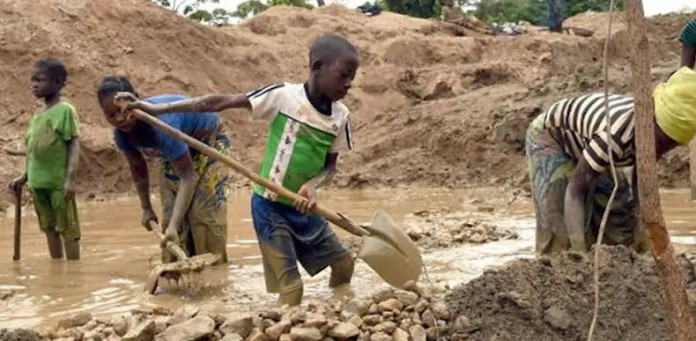By Michael Oche
A survey by the National Bureau of Statistics (NBS) has indicated that 24.6 million children, representing 39.2 percent of child population in Nigeria are engaged in child labour.
Of the 24.6 million children, the survey titled ‘Nigeria Child Labour Survey 2022’ noted that 39.6% of the numbers are boys while 38.8% are girls.
Nigerian Pilot reports that the survey, which is coming twenty-two years after the last survey on child and forced labour in Nigeria, was conducted by the NBS with support from the International Labour Organisation (ILO) and was released on Thursday in Abuja.
The report showed states like Cross River, Yobe and Abia lead the chart with scores above 60 percent, while the lowest was recorded in Lagos state with 8.9 percent.
According to the bureau, child labour is any work that robs children (under 18) of their childhood, potential, and dignity.
NBS said it also emphasises the detrimental impact on their physical and mental development.
The report shows that children between the ages of 5 to 17 are engaged in economic activities that constitute child labour.
“Of all children 5 to 17 years old in Nigeria, 50.5 percent (31,756,302) are engaged in economic activity, with little variation between boys and girls. However, not all children involved in economic activity are in child labour,” NBS said.
“39.2 percent (24,673,485) of children are in child labour and more than 14 million are involved in hazardous work (22.9 percent of children 5 to 17 years old).
“Among those in child labour, more than 20.1 million are young children in the 5–14 age group and over 4.5 million are older children in the 15–17 age group.”
The data reveals a concerning similarity in child labour involvement by sex — while slightly more prevalent among males (39.6 percent), females (38.8 percent) are not far behind.
The report also identifies a significant geographical disparity.
Child labour is considerably higher in rural areas, with 44.8 percent of children aged 5-17 involved (17.5 million). This stands in stark contrast to urban areas, where the figure is 30 percent (7.1 million).
Hazardous work is also more frequent in rural areas according to NBS, which said “more than 10.5 million children 5 to 17 years old in rural areas are in hazardous work (26.8 per cent of children), whereas in urban areas almost 4 million children are in hazardous work (16.3 per cent)”.
Based on regional distribution, northwest geopolitical zone has the highest number of children engaged in child labour, with 6,407,102 children. This is followed by the north-east (4,466,808), north-central (3,884,576), south-south (3,682,773), south-west (3,227,559), and south-east (3,004,669).
However, in terms of the percentage of children in child labour, the south-east region has the highest prevalence of children involved in child labour with 49.9 percent.
In her keynote address during the launch, minister of l;abour and employment, Nkeiruka Onyejeocha, noted that the purpose of the survey is to improve information on forced labour and child labour through data collection which will help to inform policy direction and interventions towards the elimination of child labour and forced labour in Nigeria.
She said already Nigerian has ratified ILO Conventions 138 on the minimum age for work, 182 on the worst forms of child labour, 29 and 105 on the abolition of forced labour, adding that in line with the conventions, section 34 of the 1999 Constitution of the Federal Republic of Nigeria, as amended prohibits forced and compulsory labour for any employee and also defines penalty fees, fines, imprisonment, or a combination of these sanctions for any employer found guilty.







